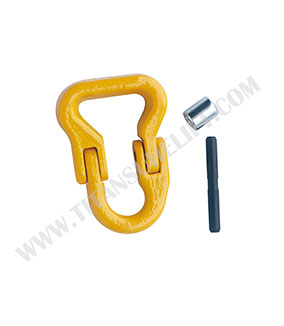In various industries and applications, lifting heavy loads safely and efficiently is paramount. Among the most popular tools used for this purpose are hand hoist pulleys and chain hoists. While both serve the primary function of lifting, they differ significantly in design, operation, applications, and benefits. This article delves into the nuances of each, providing a thorough comparison to help you determine which tool best meets your needs.
Understanding the Basics
Hand Hoist Pulley
A hand hoist pulley, often simply referred to as a pulley hoist, employs a system of pulleys to reduce the effort needed to lift heavy objects. The basic mechanism consists of a wheel or a set of wheels over which a rope or cable runs. When the rope is pulled, the load is lifted. This system can use mechanical advantage to make lifting easier, depending on the arrangement of the pulleys.
Key Features:
Mechanical Advantage: By using multiple pulleys, the effort required to lift a load can be significantly reduced.
Versatility: Hand hoist pulleys can be configured in various ways to accommodate different lifting needs.
Lightweight and Portable: Generally, hand hoist pulleys are easy to transport and set up.
Chain Hoist
A chain hoist, on the other hand, uses a chain to lift loads. It consists of a hoist mechanism that uses a chain to lift heavy objects vertically. Chain hoists can be powered manually or can be motorized for easier lifting.
Key Features:
Heavy-Duty Capacity: Chain hoists are typically designed for heavier loads and can lift several tons.
Durability: Made from robust materials, chain hoists are built to withstand tough working conditions.
Efficiency: Motorized chain hoists can lift loads quickly and with minimal physical effort.
Mechanism of Operation
Hand Hoist Pulley
The operation of a hand hoist pulley involves several steps:
Setup: The pulley system is secured to a stable structure.
Loading: The load is attached to one end of the rope or cable.
Lifting: As the operator pulls on the free end of the rope, the load is lifted due to the mechanical advantage created by the pulley arrangement.
The simplicity of this system allows for easy operation but requires physical strength and effort, especially with heavier loads.
Chain Hoist
In contrast, the operation of a chain hoist involves:
Setup: The hoist is mounted on a stable surface or suspended from a beam.
Loading: The load is attached to the hook of the chain hoist.
Lifting: For manual chain hoists, the operator pulls on a chain handle, while motorized models use a switch to lift the load. The chain wraps around a sprocket, which turns to lift the load.
The operation can be less physically demanding, especially for heavier loads, making it suitable for industrial applications.
Applications
Hand Hoist Pulley
Hand hoist pulleys are typically used in situations where lighter loads need to be lifted or moved, such as:
Construction Sites: To lift tools, materials, and equipment.
Home Improvement Projects: For lifting items in residential settings, such as furniture or heavy appliances.
Theater and Stage Productions: To hoist lighting and sound equipment.
Chain Hoist
Chain hoists, given their robust construction and higher lifting capacity, find applications in:
Manufacturing: For lifting heavy machinery parts and materials.
Warehousing: To move heavy pallets and equipment efficiently.
Construction: For heavy lifting tasks such as beams and trusses.
Shipping and Freight: To load and unload heavy containers and cargo.
Advantages and Disadvantages
Hand Hoist Pulley
Advantages:
Lightweight and Portable: Easy to carry and set up in various locations.
Cost-Effective: Generally less expensive than chain hoists.
Simplicity: Easy to understand and operate, making it suitable for less experienced users.
Disadvantages:
Limited Load Capacity: Not suitable for extremely heavy loads.
Physical Labor Required: Can be taxing on the operator, especially with heavier items.
Chain Hoist
Advantages:
High Load Capacity: Capable of lifting heavy items, often several tons.
Durability: Designed to withstand tough environments and heavy usage.
Efficiency: Reduces the physical effort required, especially with motorized options.
Disadvantages:
Weight and Bulkiness: Generally heavier and less portable than hand hoist pulleys.
Cost: Typically more expensive, especially for motorized versions.
Complexity: Requires more understanding of operation, especially with electric models.
Safety Considerations
Safety is a critical aspect of lifting operations, and both hand hoist pulleys and chain hoists have specific safety considerations:
Hand Hoist Pulley
Load Stability: Ensure that the load is properly secured to prevent slippage.
Operator Strength: Be mindful of the physical limitations of the operator, especially with heavier loads.
Inspection: Regularly check the condition of ropes and pulleys for wear and damage.
Chain Hoist
Overloading: Always adhere to the manufacturer's load capacity guidelines.
Electrical Safety: For motorized models, ensure proper electrical connections and follow safety protocols.
Regular Maintenance: Conduct frequent inspections and maintenance checks to ensure safe operation.
Conclusion
Both hand hoist pulleys and chain hoists are valuable tools in the lifting and material handling industry. Each has its strengths and weaknesses, and the choice between the two depends on specific lifting requirements, load weight, and operational contexts. Understanding these tools’ features, advantages, and limitations will ensure safer and more efficient lifting operations, ultimately enhancing productivity and safety in various applications. Whether you opt for the simplicity and portability of a hand hoist pulley or the power and efficiency of a chain hoist, making an informed decision will lead to better outcomes in your lifting tasks.







































